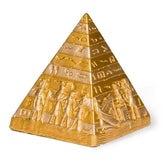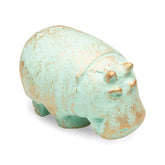Esna Temple: Unveiling the Celestial Zodiac Artwork
In a remarkable fusion of ancient art and astronomy, recent restoration efforts at Temple of Khnum in Esna, Egypt have unveiled a complete set of zodiac reliefs adorning the temple's ceiling. This discovery offers profound insights into the cultural and astronomical knowledge of the period, highlighting the temple's historical significance.

The Temple of Esna, located approximately 60 kilometers south of Luxor, has long been celebrated for its intricate reliefs and inscriptions. However, centuries of accumulated soot and dirt had obscured many of its artistic treasures. A collaborative restoration project between Egypt's Ministry of Tourism and Antiquities and the University of Tübingen in Germany has meticulously cleaned and restored the temple's ceiling, revealing vibrant depictions of the 12 zodiac signs, planets such as Jupiter, Saturn, and Mars, and various constellations. news.artnet.com

The presence of zodiac symbols in the Temple of Esna is particularly intriguing, as these motifs originated in Babylonian astronomy and were later adopted by the Greeks. Their appearance in an Egyptian temple signifies a cultural synthesis during the Ptolemaic and Roman periods, reflecting the exchange of astronomical and astrological knowledge across civilizations. Such complete representations of the zodiac are rare in Egyptian temples, making this discovery exceptionally valuable. ancient-origins.net

The restoration process has not only uncovered the zodiac signs but also revitalized the temple's vivid colors and intricate details, offering a window into the artistic brilliance of ancient craftsmen. The ceiling now showcases a dynamic tableau of mythical creatures, deities, and celestial symbols, providing scholars and enthusiasts with a richer understanding of ancient Egyptian cosmology and its interactions with neighboring cultures. heritagedaily.com

The Temple of Esna's zodiac reliefs exemplify the confluence of Egyptian, Babylonian, and Greek influences, underscoring Egypt's role as a nexus of cultural and intellectual exchange in antiquity. This discovery not only enhances our comprehension of ancient astronomical practices but also celebrates the enduring legacy of cross-cultural interactions that have shaped human history.











1 comment
Fascinating! The colors are amazing!!